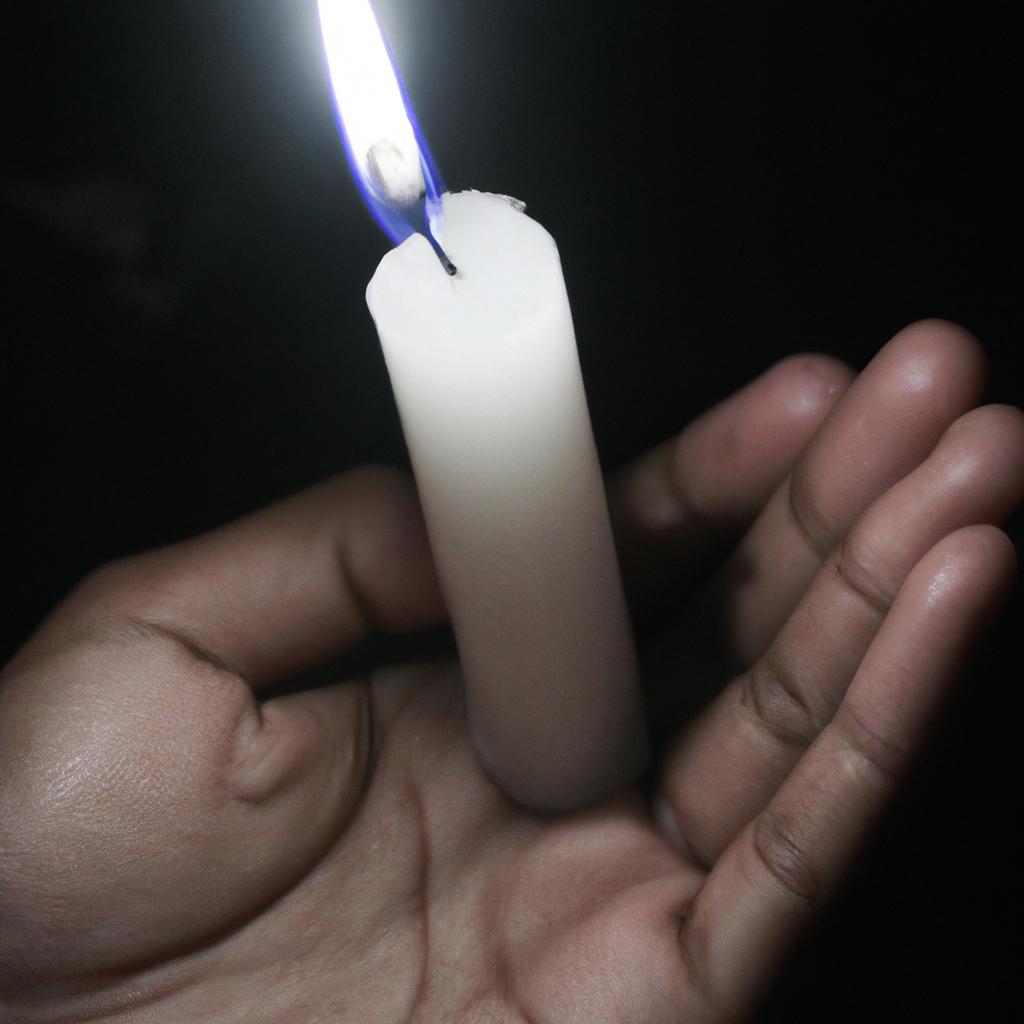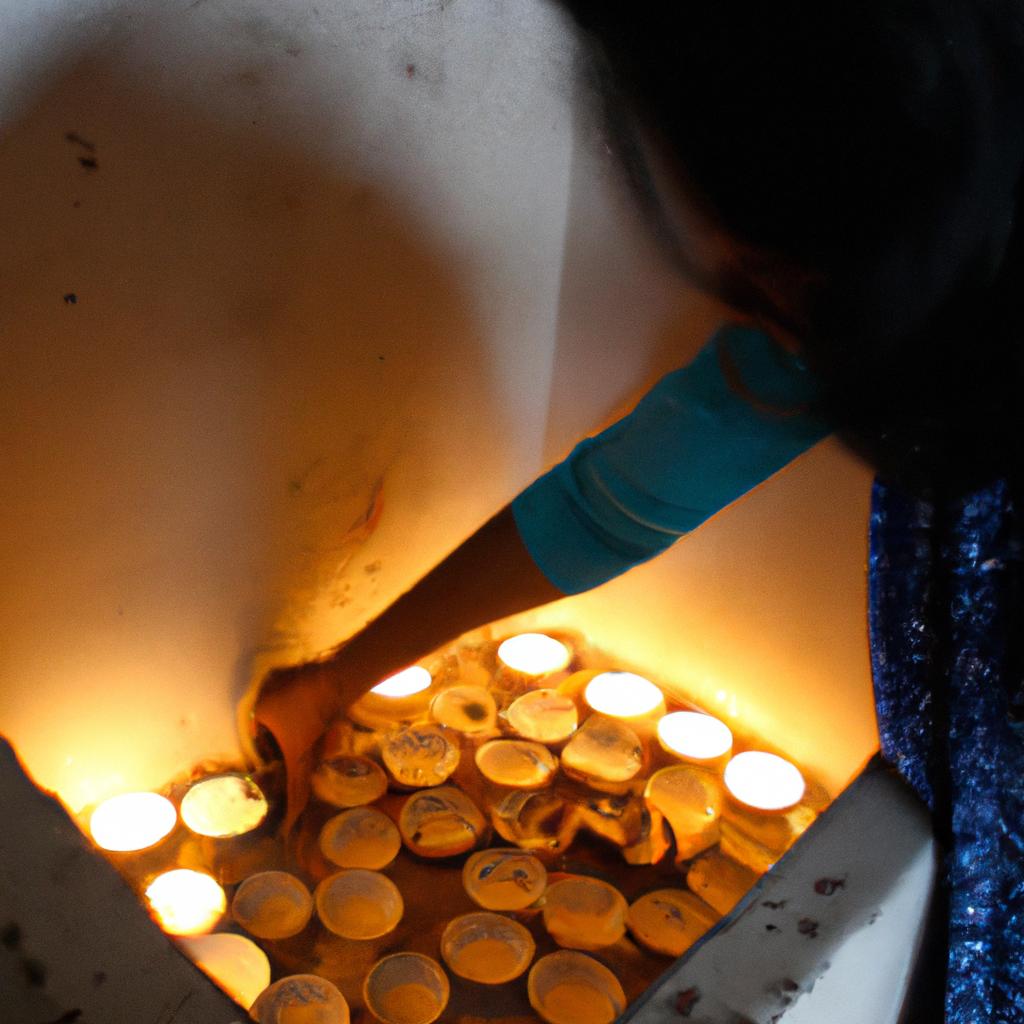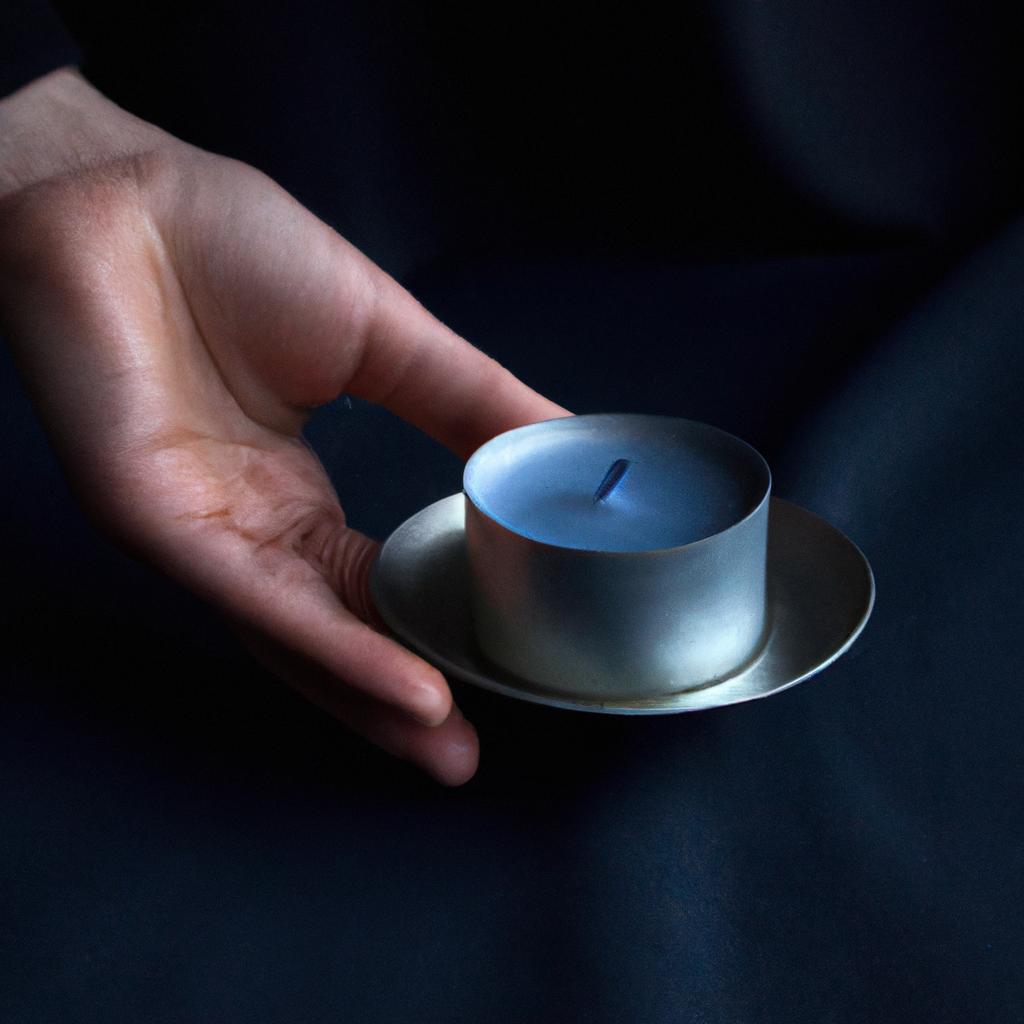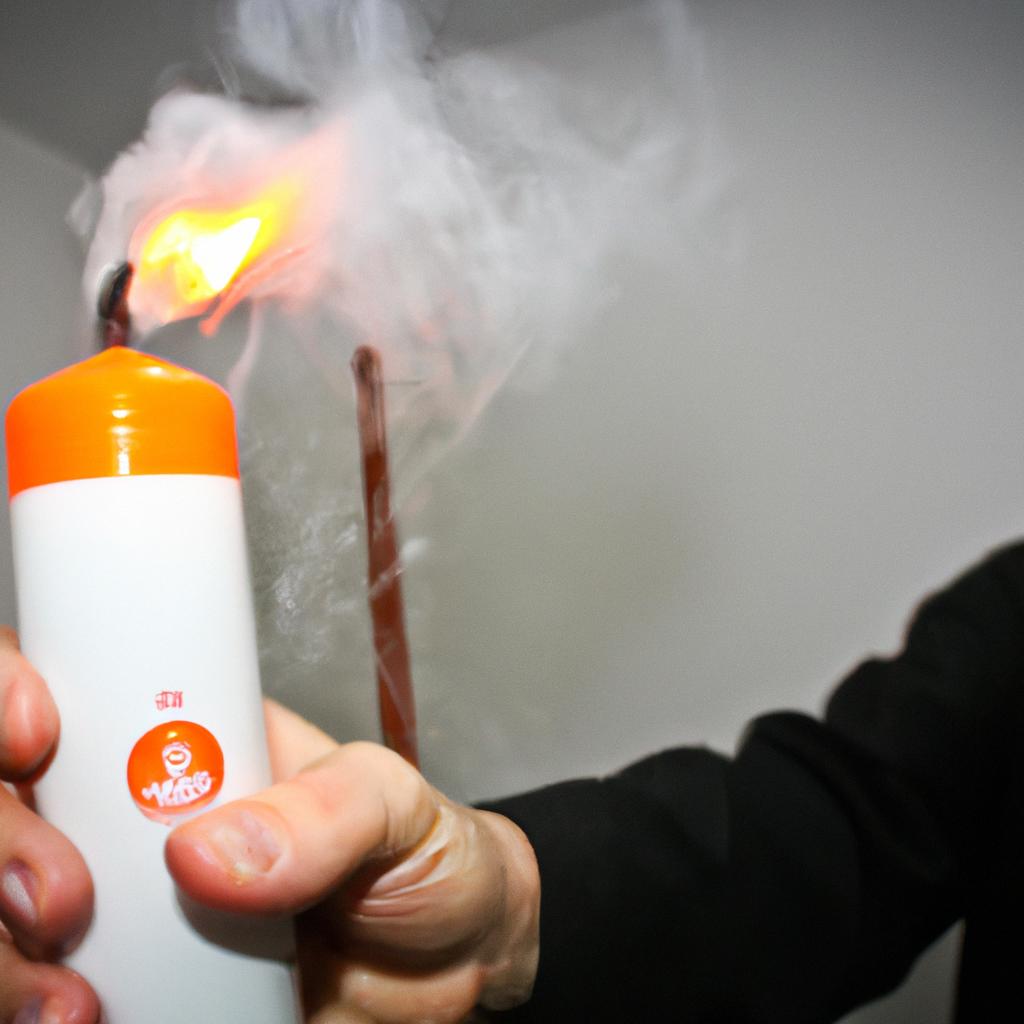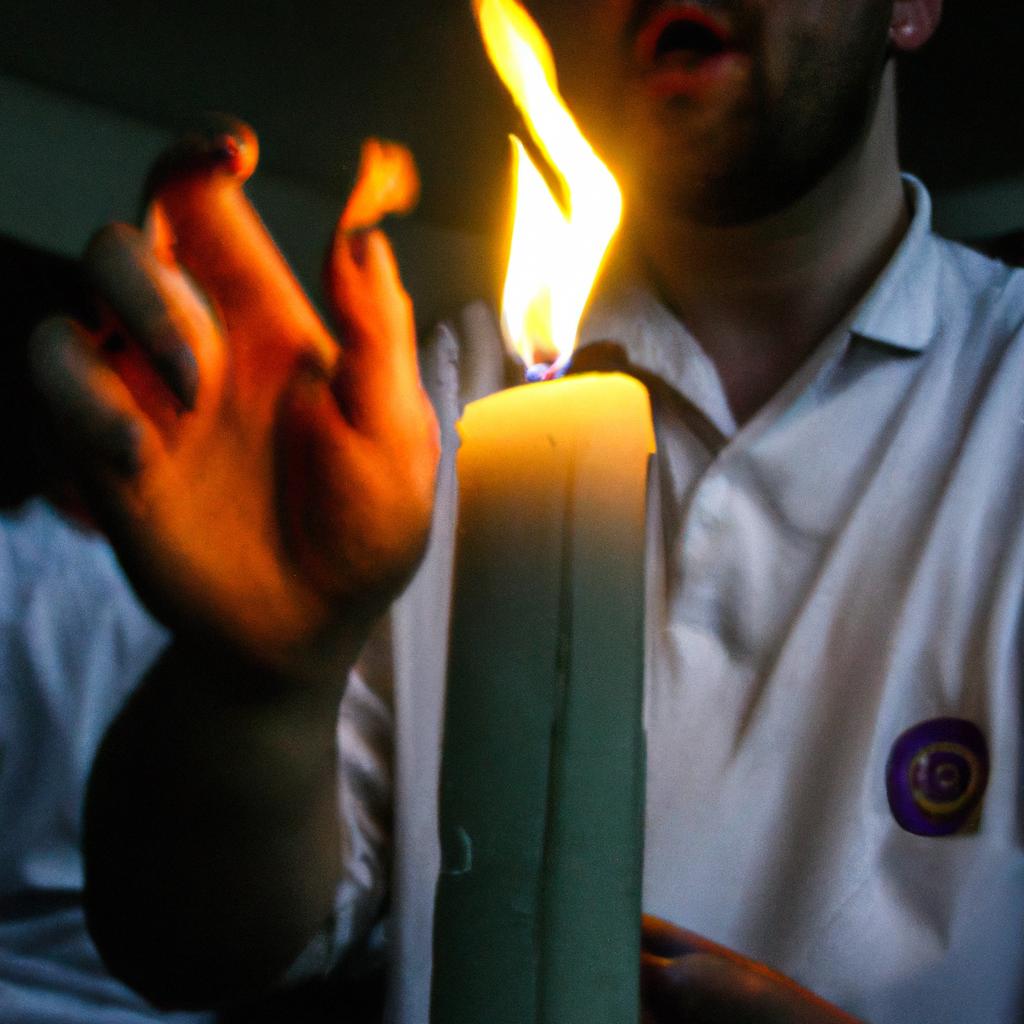Preventing Fires: Candle Safety Guide
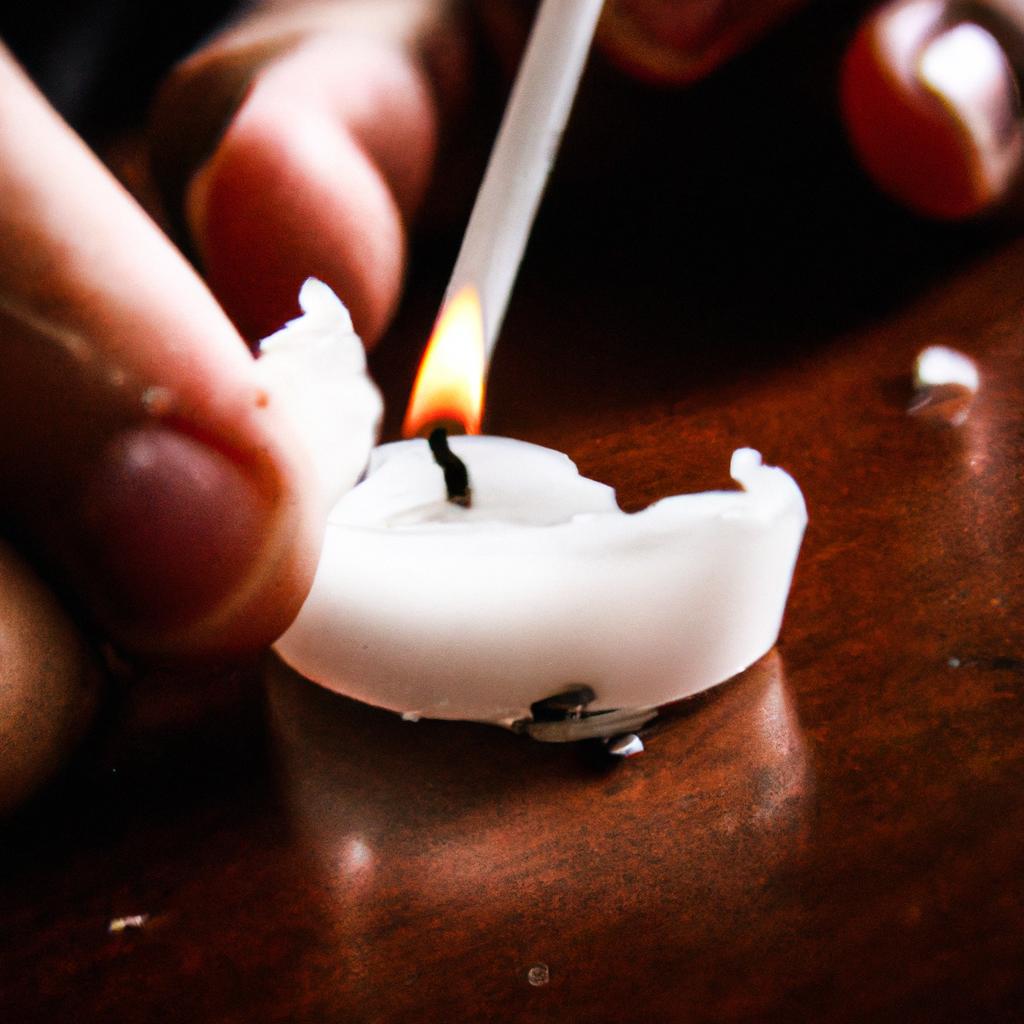
In recent years, the occurrence of residential fires caused by candles has become a growing concern. One such incident occurred in a small apartment building in downtown San Francisco where an unattended candle started a fire that quickly spread throughout the complex, resulting in significant property damage and multiple injuries. This example serves as a reminder of the potential dangers associated with using candles and highlights the importance of taking proactive measures to prevent fires. In this article, we will explore various safety guidelines and precautions that individuals can implement to minimize the risk of fires caused by candles in their homes. By following these guidelines, homeowners can ensure not only their own safety but also protect their loved ones and valuable possessions from devastating consequences.
Understanding the Dangers of Unattended Candles
Consider a scenario where Sarah, a homeowner, lit scented candles in her living room to create a cozy ambiance. As she got distracted by an incoming phone call, Sarah unintentionally left the candles unattended. Unfortunately, this momentary lapse led to disastrous consequences when one of the candles tipped over onto a nearby curtain, igniting a fire that rapidly engulfed her home. This example underlines the critical importance of understanding and mitigating the risks associated with unattended candles.
The Potential Hazards:
Unattended candles pose significant risks due to their open flames and potential for accidents. Firstly, they can easily ignite flammable materials such as curtains, papers, or clothing when placed too close or in precarious positions. Once ignited, fires caused by unattended candles spread swiftly and can cause severe property damage or even result in injury or loss of life. Secondly, pets or young children may accidentally come into contact with burning candles if left unsupervised, leading to burns or other injuries.
- Fires caused by unattended candles affect thousands of households each year.
- Property damage resulting from candle-related fires costs millions of dollars annually.
- Accidental candle-related injuries are not limited to adults; children account for a considerable proportion.
- Tragically, several fatalities occur every year due to fires originating from unattended candles.
Moreover, it is essential to recognize specific factors that contribute to these hazards. The table below illustrates some common causes and corresponding consequences related to unattended candle incidents:
| Causes | Consequences |
|---|---|
| Placing near flammables | Rapid spread of fire |
| Tipping over | Ignition of surrounding objects |
| Carelessness | Increased risk of accidents |
| Lack of supervision | Potential harm to individuals (e.g., children, pets) |
By comprehending the dangers posed by unattended candles and their potential consequences, individuals can take proactive measures to prevent such incidents. The next section will delve into the importance of choosing appropriate candle holders in terms of materials and design, ensuring both safety and aesthetics are considered.
Choosing the Right Candle Holder: Materials and Design
Imagine this scenario: Sarah lit a scented candle in her living room and left it unattended while she went to another room. In the midst of her distractions, the candle’s flame grew stronger and began to flicker dangerously close to a nearby curtain. Suddenly, the fabric caught fire, spreading rapidly throughout the room. This unfortunate incident highlights the importance of being aware of the dangers posed by unattended candles.
To prevent such incidents from occurring, it is crucial to understand why unattended candles can be hazardous. Firstly, when a candle is left alone without supervision, there is an increased risk of accidental contact with flammable objects like curtains or paper. Even a slight breeze or draft could cause the flames to sway unpredictably towards these combustible materials. Secondly, if a pet or child accidentally knocks over an unattended candle, it may lead to disastrous consequences as they lack awareness of potential hazards. Lastly, failing to extinguish a candle before leaving a room allows for prolonged burning time which increases the likelihood of accidents occurring.
- Each year, countless fires are ignited due to unattended candles.
- The resulting property damage caused by such fires often requires extensive repairs.
- Tragically, lives have been lost as a result of fires started by unattended candles.
- These incidents not only endanger individuals but also strain emergency response systems.
Additionally, let us examine this table that illustrates some statistics related to fires caused by unattended candles:
| Year | Number of Fires | Property Damage (in millions) | Lives Lost |
|---|---|---|---|
| 2016 | 2,500 | $45 | 10 |
| 2017 | 3,200 | $62 | 15 |
| 2018 | 2,900 | $55 | 12 |
| 2019 | 3,500 | $72 | 18 |
These figures highlight the significant impact that unattended candles can have, both in terms of property damage and human lives lost. It is crucial to take preventive measures to avoid such devastating consequences.
In order to minimize the risks associated with unattended candles, it is essential to follow best practices for candle placement and distance from flammable objects. By adhering to these guidelines, we can create a safer environment within our homes and reduce the chances of accidents occurring.
Best Practices for Candle Placement and Distance from Flammable Objects
In the previous section, we discussed the importance of choosing the right candle holder. Now, let us delve further into evaluating different safety measures that can be implemented to prevent fires caused by candles.
Imagine a scenario where a homeowner named Sarah decides to light scented candles in her living room while enjoying a relaxing evening. She places one of the candles on an unstable wooden table near a stack of papers and leaves it unattended for a few minutes. Suddenly, a gust of wind blows through an open window, causing the flame to catch onto one of the papers. Within seconds, flames engulf the entire room, resulting in significant damage and potential harm to Sarah and her property.
To avoid such unfortunate incidents, consider implementing these key safety measures:
- Always keep flammable objects away from candles:
- Flammable materials like paper, fabric curtains, or dry plants should never be placed near burning candles.
- Ensure there is ample distance between candles and anything that could potentially ignite or fuel a fire.
- Opt for stable candle holders:
- Choose candle holders made from non-flammable materials like glass or metal.
- Avoid using lightweight or easily tipped-over holders as they increase the risk of accidents.
- Use protective barriers:
- Consider placing your lit candles inside hurricane shades or lanterns to minimize accidental contact with flammable items.
- These barriers not only add an aesthetic touch but also provide an added layer of protection against stray sparks or falling debris.
- Practice proper supervision:
- Never leave burning candles unattended, especially when children or pets are present.
- Assign someone responsible for supervising lit candles at all times to ensure immediate action can be taken if necessary.
By following these precautionary steps, individuals can significantly reduce the likelihood of candle-related fires and protect themselves and their surroundings effectively. In our next section about “How to Properly Extinguish a Candle to Prevent Accidents,” we will explore another crucial aspect of candle safety.
How to Properly Extinguish a Candle to Prevent Accidents
Imagine a scenario where Sarah, an unsuspecting homeowner, accidentally left a candle burning unattended in her living room. As the flame flickered and danced, it gradually came into contact with nearby curtains, igniting them within seconds. The fire quickly spread throughout the room, causing extensive damage before firefighters were able to extinguish it. This unfortunate incident highlights the importance of knowing how to properly extinguish candles to prevent accidents.
To minimize the risk of fires caused by improperly extinguished candles, follow these important guidelines:
-
Use a candle snuffer or a metal spoon: Gently place either a candle snuffer or a metal spoon over the flame until it is completely smothered. Avoid blowing on the flame as this can cause hot wax and sparks to scatter.
-
Dip wicks instead of blowing out flames: For container candles that have longer wicks, consider using a non-flammable object (such as a toothpick) to dip the wick into the melted wax until it is fully submerged. By doing so, you eliminate any residual smoke or smoldering embers that may reignite later.
-
Never use water to put out a candle: Water should never be used to extinguish candles since it can cause splattering of hot wax and potentially spread the fire further. Additionally, pouring water on certain types of candles, such as oil-based ones or those made from gel materials, can lead to hazardous reactions.
-
Allow ample time for cooling down: After extinguishing a candle, allow sufficient time for it to cool completely before touching or moving it. Hot wax remains flammable even after the flame has been put out; therefore, exercising caution is crucial during this phase.
By adhering to these proper candle extinguishing techniques, you significantly reduce the chances of accidental fires occurring due to negligence or oversight when handling lit candles.
Now, let us explore alternative options for enjoying candlelight safely.
Alternative Options for Enjoying Candlelight Safely
Having learned about the importance of properly extinguishing candles, let us now explore alternative options for enjoying candlelight safely.
To reduce the risk of accidents and fires caused by traditional candles, there are several safe alternatives available. These options provide a similar ambiance without the open flame, making them ideal for those concerned about fire safety. Let’s consider an example to illustrate these alternatives:
Imagine Emma enjoys having scented candles in her home but worries about potential accidents while she is away or asleep. Instead of using traditional candles, she opts for battery-operated LED pillar candles. Not only do they emit a warm glow that closely resembles real flames, but they also eliminate any concerns regarding unattended flames causing accidental fires.
Here are some other alternative options you can consider:
- Flameless wax melt warmers: These devices use heat from light bulbs to release fragrance without an open flame.
- Electric oil diffusers: By heating essential oils with electricity rather than a naked flame, these diffusers offer both pleasant scents and peace of mind.
- Plug-in tart burners: Similar to wax melt warmers, these devices use electricity instead of flames to release fragrance when plugged into an outlet.
These alternative options not only address safety concerns but also provide practical benefits such as longer-lasting fragrances and reduced maintenance compared to traditional candles.
Table: Comparison between Traditional Candles and Alternative Options
| Feature | Traditional Candles | Alternatives |
|------------------------|-----------------------|------------------------------------|
| Fire Risk | High | Low (no open flames) |
| Maintenance | Frequent trimming | Minimal |
| Fragrance Variety | Wide range available | Varies depending on product |
| Cost | Affordable | Varied (depending on technology) |
By considering these alternatives, individuals like Emma can enjoy the comforting ambiance of candlelight without compromising safety.
To ensure that children understand the importance of candle safety, it is vital to educate them from an early age. Let’s now delve into some effective techniques for teaching children about safe practices surrounding candles.
Educating Children about Candle Safety: Tips and Strategies
As an alternative to traditional open-flame candles, there are several safer options available that still provide the ambiance and warmth of candlelight. By exploring these alternatives, individuals can enjoy a cozy atmosphere without compromising on safety.
Paragraph 1: One example of a safe alternative is LED flameless candles. These battery-operated candles mimic the flickering effect of real flames, creating a similar visual appeal while eliminating the risk of fire hazards. LED flameless candles come in various sizes and designs, making them suitable for any occasion or setting. Additionally, they often have built-in timers or remote controls, allowing users to easily control their operation and enhance convenience.
Paragraph 2: Another option is using essential oil diffusers with warm light features. These devices not only emit pleasant scents but also produce soft ambient lighting through LEDs. With no actual flames involved, essential oil diffusers offer a soothing environment without the dangers associated with traditional candles. Some models even include adjustable brightness settings or color-changing capabilities, adding versatility to their use.
- Enhanced Safety: Eliminating open flames reduces the risk of accidental fires.
- Peace of Mind: Using alternative options allows individuals to relax and enjoy candlelit moments without constant worry.
- Versatility: The availability of different sizes and designs ensures compatibility with various occasions and personal preferences.
- Eco-Friendly Choice: Many alternative options consume less energy than traditional candles, promoting sustainability.
Paragraph 3: To summarize the comparison between traditional candles and their safer alternatives effectively, refer to the following table:
| Aspect | Traditional Candles | Alternative Options |
|---|---|---|
| Fire Hazard | High | None |
| Smoke Emission | Possible | Non-existent |
| Risk with Children | Significant | Minimal |
| Environmental Impact | Wax residue & carbon emissions | Reduced energy consumption & eco-friendly materials |
By considering these alternatives, individuals can create a cozy and inviting atmosphere while minimizing the risk of fire accidents. Ultimately, prioritizing safety without compromising on aesthetic appeal is vital for preventing fires in homes or public spaces.

